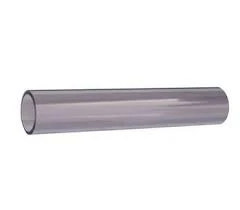ធ្នូ . 28, 2024 22:37 Back to list
Versatile Solutions with Colored PVC Pipes for Creative Projects and Efficient Construction
The Versatility of Colored PVC Pipes A Closer Look
Colored PVC pipes are rapidly gaining popularity in various industries, thanks to their versatile applications and aesthetic appeal. PVC, or polyvinyl chloride, is a durable plastic material commonly used for piping systems. When colored, these pipes not only serve functional roles but also add a level of visual distinction that is both practical and attractive.
One of the primary advantages of colored PVC pipes is their ability to designate different applications within plumbing and construction projects. In industrial environments, it is essential to differentiate pipes carrying different substances or functioning within different systems. For example, blue pipes are often used for potable water, while green pipes might indicate drainage systems, and yellow may be used for gas lines. This color-coding makes it easier for workers to identify pipes quickly, reducing the likelihood of dangerous mistakes. In emergencies, being able to recognize the purpose of each pipe at a glance can save invaluable time and prevent hazardous situations.
Furthermore, colored PVC pipes enhance overall safety and compliance with regulations in many industries. Many local and national standards require clear identification of piping systems, particularly in commercial and industrial settings. Using colored pipes ensures compliance with these regulations, which can vary based on location and industry. It also streamlines maintenance procedures, as technicians can quickly locate and service the correct pipes without wasting time deciphering labels or instructions.
colored pvc pipe

Aesthetically, colored PVC pipes offer creative freedom in design. They can be utilized in architectural applications where visual appeal is vital. For instance, in landscaping projects, brightly colored PVC pipes can be used as functional garden borders or as components in artistic installations. This gives designers the ability to incorporate functionality with eye-catching decorative elements. Various colors and finishes are available, allowing for customization that aligns with specific themes or branding in business settings.
In addition to aesthetic and practical benefits, colored PVC pipes are also lightweight and easy to handle, making them ideal for both DIY projects and large-scale construction work. Unlike metal pipes, which can be heavy and cumbersome, PVC pipes are easy to transport and install without the need for heavy machinery. This feature is particularly appealing for homeowners and contractors looking to reduce labor costs and enhance efficiency.
Additionally, colored PVC pipes are resistant to corrosion and chemical exposure, making them suitable for a wide range of environments. They maintain their structural integrity over time, which is particularly important for systems that may be exposed to harsh weather conditions or chemicals. This durability translates to lower maintenance costs and longer service life, providing significant value for investments in plumbing and piping infrastructure.
In conclusion, colored PVC pipes are more than just a functional component of construction and plumbing; they bring safety, efficiency, and aesthetic value to various applications. Their ability to differentiate systems, comply with regulations, and enhance visual appeal makes them an increasingly popular choice across industries. As innovation continues to drive the development of PVC materials and their applications, it is likely that colored PVC pipes will become even more prevalent in our everyday lives, from the homes we live in to the industries that keep our societies running smoothly. Embracing their versatility may lead to safer, more efficient, and visually appealing environments for everyone.
-
Durable PP Rigid Sheet: Versatile & High-Quality Plastic Panels
NewsAug.08,2025
-
Premium Glossy PP Rigid Sheet – Durable & Versatile
NewsAug.07,2025
-
High-Quality HDPE Sheet | Durable Plastic Panels
NewsAug.06,2025
-
High-Precision PVC Rigid Sheets for Vacuum Forming | AI-Optimized
NewsAug.05,2025
-
Durable PVC-M Water Supply Pipes | 60-Year Life
NewsAug.04,2025
-
Premium HDPE Water Supply Pipes: Durable & Leak-Proof
NewsAug.03,2025

